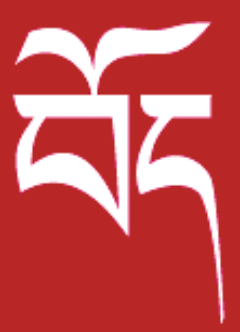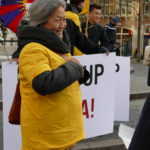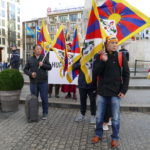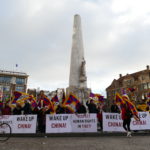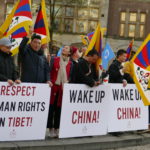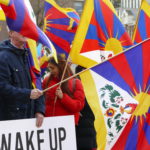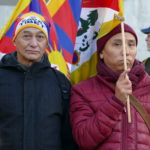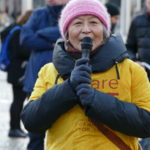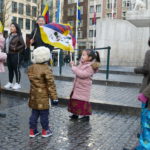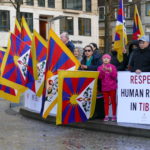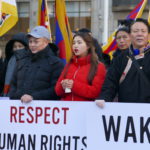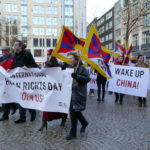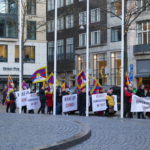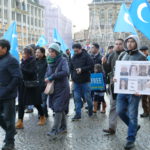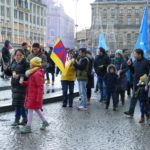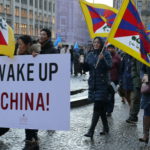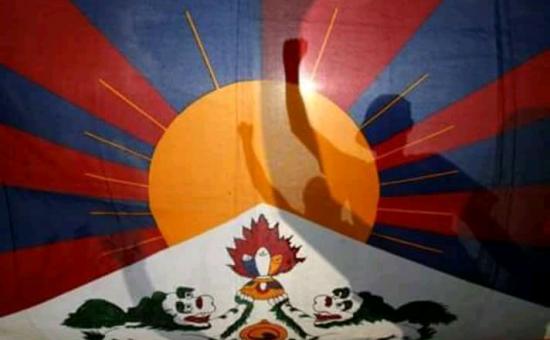
Dag van de rechten van de mens, wake op de Dam
Op de dag van de mensenrechten, 10 december 2018, organiseerden de Tibet Support Groep, de International Campaign for Tibet, de Tibetaanse gemeenschap en de Uyghur Omroep een wake bij het monument op de Dam voor vrede en mensenrechten in Tibet en Oost-Turkestan. Hier een foto-impressie:
De wake op de Dam in Amsterdam, 10 december 2018 van 15:00 tot 17:00 uur. Wij riepen China op de aanhoudende mensenrechtenschendingen te stoppen. Wij riepen de Nederlandse regering op om handelsbetrekkingen met China nooit boven mensenrechten te plaatsen
wilt u meer weten? Klik hier: Contact
STEUNBETUIGING AAN SCHRIJVERS EN KUNSTENAARS VAN HET TIBETAANSE GEWELDLOZE CULTURELE VERZET:

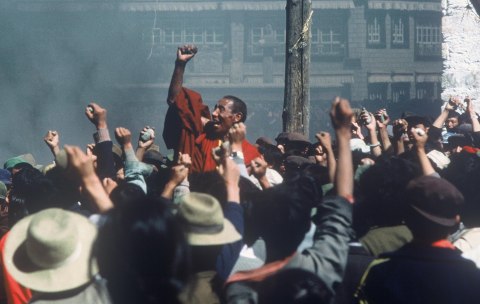
Volg ons ook op Facebook
10 december 1988 was een zwarte dag in de reeks van gebeurtenissen die in 1987 begon met een opstand in Lhasa, de hoofdstad van Tibet.
Tibetanen riepen op tot de vrijheid van Tibet. China reageerde met brute kracht, en er zijn vele levens verloren gegaan.
Het was het begin van een reeks protesten in de jaren die volgden, en het was een belangrijke mijlpaal in de internationale beweging voor een vrij Tibet. In feite is de organisatie Free Tibet gevormd in de nasleep van deze verschrikkelijke gebeurtenissen.
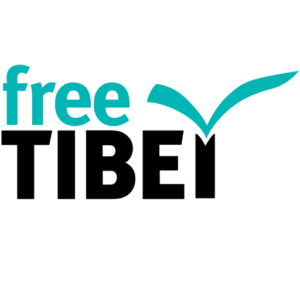
De Tibet Support Groep Nederland steunt de organisatie Free Tibet en werkt samen met Free Tibet.
In het najaar van 2017 publiceerde onderzoekspartner Tibet Watch nooit eerder vertoonde beelden van de protesten en onthult eerder onbekende details over de dappere betrokkenen.
Wij moeten u waarschuwen dat het rapport expliciet beeldmateriaal bevat van het geweld dat volgde op die dag en sommige lezers kunnen ze schokkend vinden.
Zie het rapport
Hieronder uit het rapport een verslag van de Nederlandse Christa Meindersma, die in 1988 werd getroffen door kogels tijdens het protest in Lhasa op 10 december van dat jaar.
“The photo below shows Dutch national Christa Meindersma, who was shot during the protest in Lhasa on 10 December 1988. Tibet Watch contacted her to obtain her own account of the events of that day:
This is me, just after the shooting, 10 December 1988. We are walking away from the Bark hor towards the main road where the Yak hotel and Banakshol were located. It was just after being shot on the Barkhor. We, me, Camilla Coronoa, Ron Schwartz, two other foreigners, were watching a small demonstration from the Barkhor. The demonstrators had reached in front of the Jokhang.
Suddenly, we saw special forces run into the Barkhor. We never expected them to shoot but started to run away anyway. They opened fire indiscriminately without warning.
I felt something hot in my arm, then heard the sound of gunfire. I first thought these were firecrackers and that this is why they tell children not to play with firecrackers. Then I realised I had been shot. I wanted to faint but a voice in my head told me to run back into the Barkhor. I ran backand wanted to seek refuge behind a turned over market table. There were too many Tibetans already behind that table. I sat in front of the table, to be out of the line of fire. A man sat next to me, he had been shot in the leg. We looked back and saw the soldiers who continued shooting, coming close. We both realised we would die if we stayed there. We looked at each other and said: ta dro, let’s run. We both ran. The man fell. I did not stop but continued to run with eight soldiers running after me shooting at me. I wanted to faint but kept on telling myself that my legs were ok and I had to keep on running. Bullets were skimming past my ears. I turned the corner, ran into the first door that was opened, into a courtyard.
There were lots of Tibetans crying, many wounded. Again, I wanted to faint. I said to the woman next to me that I had been shot and could she help me. She took me into her house. I met her ten years later. She told me she had taken me into her house and thought I would die. She did not have any medicine so she and a friend decided to cut a precious pill in half. One half they made into a paste and rubbed in my wounds. The other half they burned as a kind of incense under my nose. They wanted me to die peacefully. I remember I could not stop screaming with pain. I remember being embarrassed that I was making such a noise but the pain was too fierce. After a while the women decided that I was not going to die as I did not calm down and that I should be taken to the hospital. Some foreigners helped me walk until we got a car to go to the hospital.
You can see the blood stains on my jacket and trousers. The bullet had traversed my left arm and shoulder and had exited at my back. I did not know this at the time but just felt two places of intense pain, my arm and my back. After eight hours in the hospital I was kept under house arrest for one week. My passport was confiscated and me and my friends were interrogated. I received my first treatment in the military hospital in Hong Kong, one week later, on 16 December. When the doctor had examined me he said: “I have seen thousands of bullet wounds but never one like this. You should have been dead.”
© Testimony from Christa Meindersma via email correspondence with Tibet Watch on 20 February 2017
